Incredible India - Ranakpur
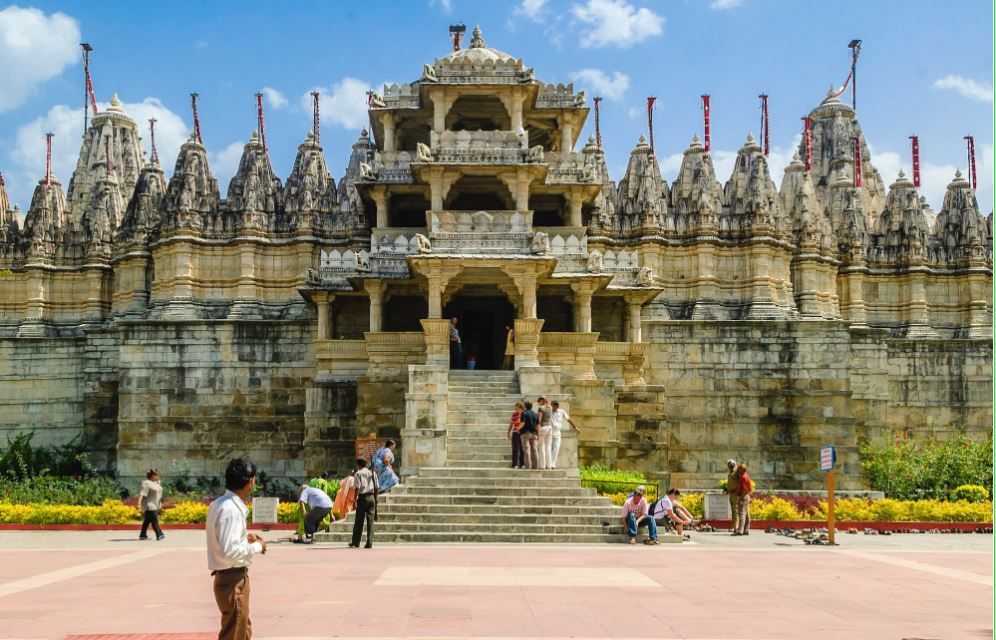
India continues to be incredible as we head for our next destination in Rajasthan - Udaipur - with its shimmering lakes surrounded by more palaces.
But first a long driving day winding our way around Mount Abu to the Jain Temple of Ranakpur, built entirely in white marble, around the 14th century - known for its magnificent architecture.
There are 29 pillared halls, 80 domes and 1444 intricately carved pillars - each unique, decorated in a different way. Wow! What a place!
I’d never heard of Jainism - it’s one of the 4 religions originating from the Indian subcontinent - the others being Hinduism, Buddhism and Sikhism.
Jainism is the oldest, believed to have originated in the 6th century BCE, Buddhism in the 5th century BCE. Sikhism is the youngest of the world’s religions, emerging only 500 years ago.
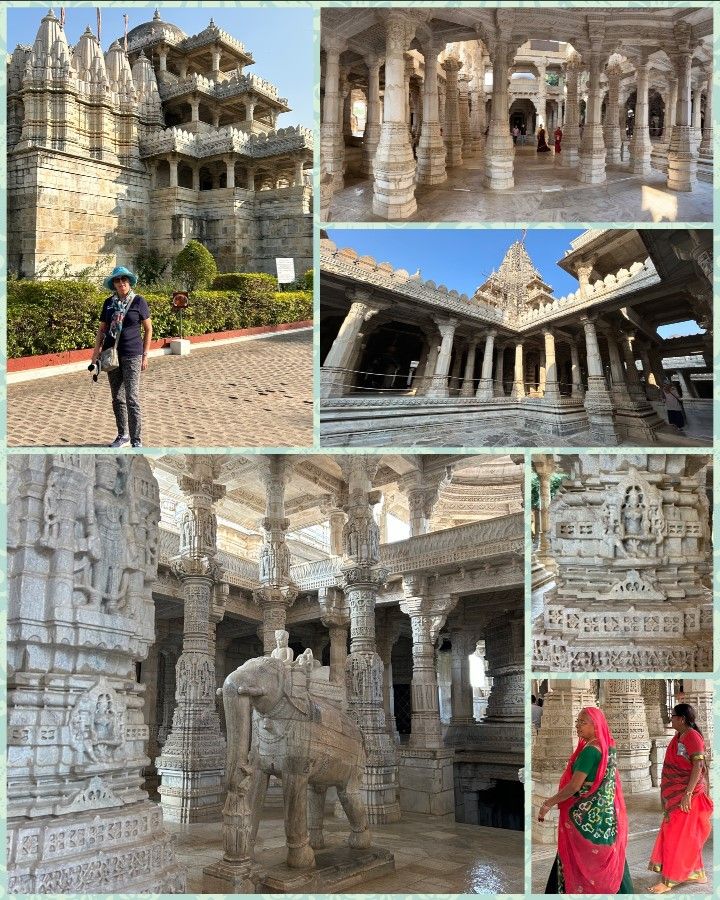
Like Hindus and Buddhists, Jains believe in reincarnation. The cycle of birth, death, and rebirth is determined by one's karma, the path to enlightenment through nonviolence and reducing harm to living things (including plants and animals) as much as possible, to the extent that they often where a gauze mask and drink filtered water to avoid inhaling or swallowing tiny insects.
They are strict vegetarians, only ever eat before sunset and never anything grown under the ground like potatoes. The strictest Jain’s don’t even wear clothes and live on the generosity of others.
The Jains account for 4% of India’s population, but that's still million. Despite their relatively low numbers, they have a large impact on India’s economy, being the most well-educated and wealthy.
A tour of India is not complete without some shopping opportunities. We visited an enourmous second-hand store and textile factory.
The warehouse filled with pre-loved items - we wanted to delve into the treasure trove to find that something special we could not live without!
Alas we were enticed into the showroom to view tablecloths, throws and shawls made for some of the European fashion houses - Versace, Louis Vuitton - the over-runs sold at bargain basement prices.
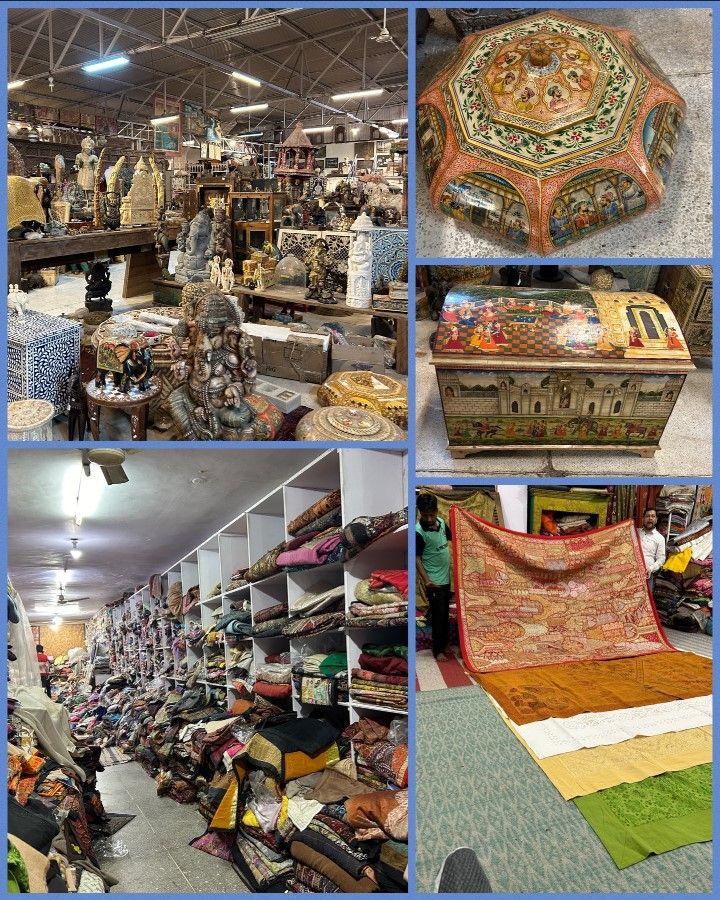
He was a good salesman, the promised 10-minute show stretched to more than an hour - I am not much of a shopper, travelling with a very small bag but even I was caught up in the buying spree! We were told Brad Pitt had visited recently and bought up big.
Usually I can dissuade persistent hawkers trying to sell me their wares, showing complete disinterest. But just a momentary glint in my eye is enough to spur them on and on two occasions they wore me down, buying a beautifully (hand painted?) peacock and of all things a turban!
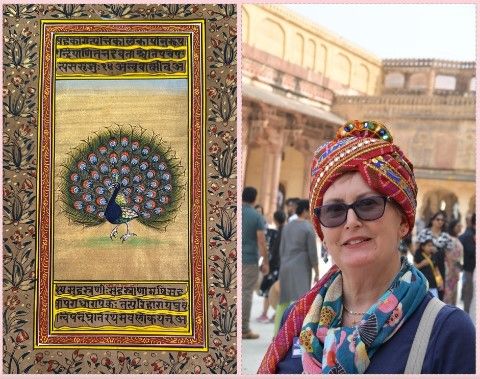
Obviously I was taken in by dashing Sikh men, easily distinguished by their turbans, often unshorn hair and beard, with a carefully manicured pointed moustache. Most Sikhs wind their own turbans every day, using a very long length of cloth. I cheated as mine has a fixed, hard base.
Our guide told us in his village, Sikh men would tear around on their motorbikes to dry their freshly washed long locks - what a sight that would be!
Their colourful turbans offer an insight into Sikh doctrine - Orange and blue are popular - symbols and reminders of Sikh history and battles. Yellow is a cheerful colour that represents sunshine, joy, and happiness. Turbans in pink and red are common during weddings.
Black turbans are also popular, a versatile colour also indicating the ego’s resignation and humility – a reminder of this Sikh virtue, while white turbans repel negativity, being radiant, and pure, often connected with physical cleanliness and mindfulness, focusing on thoughts and deeds.
Sikhism advocates equality, social justice and service to humanity. Founded by Guru Nanak, he aligned with no religion, and respected all religions, at a time when India was being torn apart by castes, sectarianism, religious factions, and fanaticism.
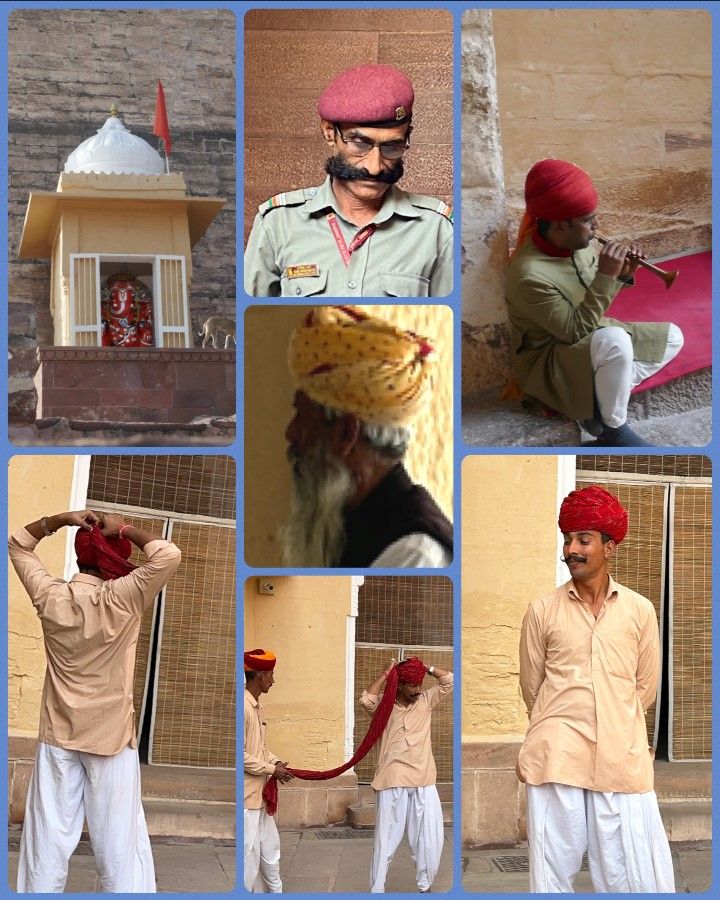
Did you know that many common English words are derived from Hindi? Certainly, I didn’t - that’s one of the joys of travel, learning obscure facts. Some examples include guru, bandana, bungalow, bangle, jungle, shampoo, chutney, thug, loot and chit.
Join me tomorrow to explore Udaipur - also in Rajasthan, said to be the most romantic city on the subcontinent.
